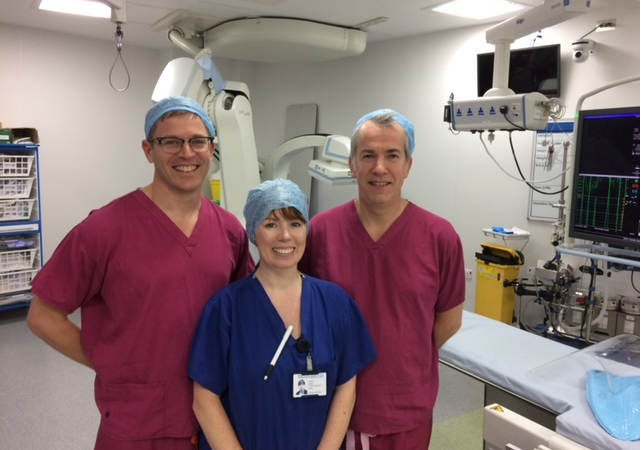
Cardiologists work to diagnose, assess and treat people with a wide variety of heart conditions such as:
- angina
- arrhythmia
- coronary heart disease (also known as ischaemic heart disease)
- endocarditis
- heart attack
- heart failure
- heart murmurs
- heart valve disease
There are also many other sudden and chronic heart conditions we diagnose and treat at our hospitals.
How we help
Our cardiologists provide a number of different cardiology services to help with the diagnosis and treatment of heart conditions.These can be non-invasive and interventional which means no surgery is involved, or invasive which involves surgery but with minimal invasive techniques.
Diagnostic cardiology / Non-invasive cardiology
Investigations include:
- ambulatory ECG monitoring
- blood pressure monitoring
- echocardiography (transthoracic and transoesophageal)
- exercise tolerance testing
- HeartFlow analysis
- tilt table testing
- cardiac imaging
- MRI and CT scans
- myocardial perfusion
Invasive cardiology
Invasive cardiology includes:
- angiography
- aortic valve implant
- catheter ablation
- cardioversion
- complex pacing
- coronary stenting
- electrophysiology
- implantable loop recorder
Watch our patient experience video
Listen to our team and patient Mike Boice talk about his transcatheter aortic valve implantation.
Where we are
Royal Sussex County Hospital
Sussex Cardiac Centre
The Sussex Cardiac Centre at the Royal Sussex County Hospital in Brighton is based on levels 6 and 7 in the Millennium Wing.
Diagnostic cardiology / Non-invasive cardiology
You can find us in the Louisa Martindale Building, Level 2, Pink Zone C.

Worthing and Southlands hospitals
Cardiology wards at Worthing and Southlands hopsitals include:
St Richard’s Hospital
Cardiology wards at St Richard’s Hospital include:
Consultants
Find out more about our specialist cardiac consultants.
View our cardiac consultantsResearch
We have a dedicated cardiac research unit which produces reliable high quality research to improve patient care, develop better treatments and increase our understanding of disease.
Read more about our researchHelpful resources
Take a look at our cardiology patient information leaflets.
Read our cardiology patient information leaflets